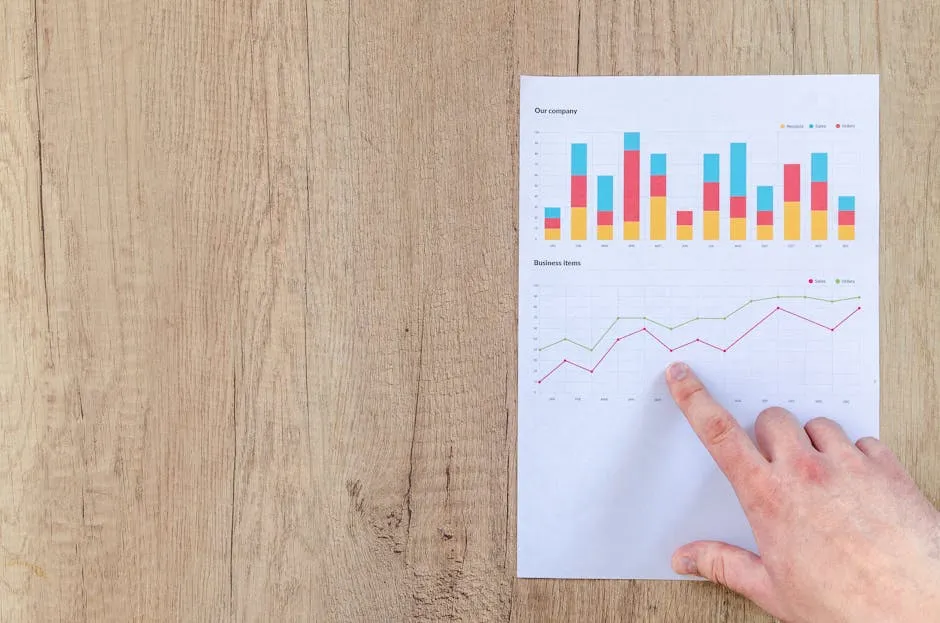Introduction
Statistics is like the secret sauce behind many of our daily decisions. From predicting the weather to determining healthcare outcomes, statistics plays a vital role across various fields. In social sciences, it helps us understand human behavior. In healthcare, it aids in clinical trials and disease prevalence studies. For businesses, it’s essential for market research and decision-making.
So, why should you care about quizzes? Quizzes are not just for fun; they’re powerful tools for learning. They help you solidify your knowledge, assess your understanding, and prepare for those stressful exams. Think of quizzes as your trusty sidekick in the quest for statistical mastery.
This article will guide you through the exciting world of statistics quizzes. We’ll cover different types of quizzes, the benefits of taking them, and where to find the best resources. By the end, you’ll be equipped to tackle any statistics challenge that comes your way. Let’s get ready to crunch some numbers!

Understanding Statistics
What is Statistics?
Statistics is the science of data. It involves collecting, analyzing, interpreting, and presenting numerical information. You can think of it as a way to make sense of the world through numbers. Statistics is generally divided into two main categories: descriptive and inferential statistics.
Descriptive statistics summarizes data from a sample using measures such as mean, median, and mode. It’s all about describing what you see. On the other hand, inferential statistics takes it a step further. It allows us to make predictions or generalizations about a population based on a sample. It’s like being a fortune teller—except instead of crystal balls, you use data!
Understanding the differences between descriptive and inferential statistics is crucial for effective data analysis. Learn more about inferential statistics.
The importance of statistics cannot be overstated. In research, statistics provides the tools necessary to validate hypotheses and analyze trends. In data analysis, it helps us draw conclusions and make informed decisions. Whether you’re evaluating a new drug’s efficacy or analyzing customer behavior, statistics is the bedrock of reliable conclusions.
So, buckle up! Understanding statistics is not just about crunching numbers; it’s about gaining insights that can lead to better decision-making across various domains. If you want to dive deeper into the world of statistics, consider picking up Statistics for Dummies. It’s a great starter guide that breaks down complex concepts into bite-sized pieces!

Key Concepts in Statistics
Basic Terms
Understanding statistics begins with familiarizing yourself with some basic terms. Here are a few essentials:
- Population: This is the entire group you want to draw conclusions about. Think of it as the vast ocean of data.
- Sample: A smaller group selected from the population. It’s like taking a sip of ocean water to guess its saltiness.
- Mean: The average value, calculated by adding all numbers and dividing by the count. Easy peasy! Learn more about the mean.
- Median: The middle value when data is organized. If you line up your friends by height, the one in the middle is the median. Check out median statistics in Poland.
- Mode: The most frequently occurring value. It’s the life of the party—everyone loves it! Explore more about mode and its applications.
- Variance: A measure of how much the values in a data set differ from the mean. Higher variance means more chaos.
- Standard Deviation: The square root of variance, indicating how spread out the data points are. A low standard deviation means they’re snuggled up close to the mean.

Types of Data
Data comes in various flavors, and knowing the difference is crucial:
- Qualitative Data: Non-numeric information, such as colors, names, or labels. Think of it as the icing on a cake—delicious but not measurable!
- Quantitative Data: Numeric information that can be measured. This is your cake itself—size, weight, and calories.
- Discrete Data: Counts that can only take specific values. For example, the number of pets you have.
- Continuous Data: Measurements that can take any value within a range. Like your height, which could be 5.6 feet or 5.67 feet!
With these fundamental concepts in mind, you’re now ready to tackle the exciting world of statistics quizzes! And if you want to master the use of statistical software, grab a copy of Statistical Software Package to get you started!

Types of Statistics Quizzes
Overview of Quiz Types
Statistics quizzes come in different flavors, just like ice cream! Here’s a look at the main types:
Introductory Quizzes
These quizzes are perfect for beginners. They focus on basic concepts and terminology. Think of them as your training wheels. They help you test your knowledge without overwhelming you. You’ll find questions about mean, median, and simple data interpretation. If you find yourself struggling, consider picking up The Art of Statistics: Learning from Data. It’s a fantastic resource for beginners!

Advanced Quizzes
For those who have conquered the basics, advanced quizzes await! These quizzes dive into more complex concepts. Get ready to tackle hypothesis testing, regression analysis, and those tricky p-values. They’re like the Olympic Games of statistics—only for the bravest! And if you want to delve into randomness, check out The Drunkard’s Walk: How Randomness Rules Our Lives. It’s a thrilling read!

Specialized Quizzes
Specialized quizzes zoom in on specific areas of statistics. Whether you’re interested in probability, sampling techniques, or statistical tests like t-tests or ANOVA, there’s a quiz for you. These quizzes cater to niche topics, allowing you to sharpen your skills in a particular area. If you’re looking for a deeper understanding of statistical methods, consider adding Statistical Methods for the Social Sciences to your reading list!
In summary, no matter your level, there’s a statistics quiz tailored just for you. Whether you’re warming up with introductory quizzes or tackling advanced concepts, each quiz offers a chance to flex your statistical muscles and bolster your knowledge. So, grab your pencil and get ready to test your skills!

Sample Quizzes
Mean, Median, Mode Quiz
Want to test your understanding of central tendency? Try these questions:
- What is the mean of the following data set?
Numbers: 4, 8, 12, 16- A) 8
- B) 10
- C) 12
- D) 14
- What is the median of this data set?
Numbers: 3, 5, 1, 2, 4- A) 2
- B) 3
- C) 4
- D) 5
- Which number is the mode in the following set?
Numbers: 6, 8, 6, 10, 12- A) 6
- B) 8
- C) 10
- D) 12

Probability Quiz
Ready to tackle probability? Here are some sample questions:
- If a die is rolled, what is the probability of rolling a 3?
- A) 1/6
- B) 1/3
- C) 1/2
- D) 1/4
- What is the probability of drawing a red card from a standard deck of 52 cards?
- A) 1/2
- B) 1/4
- C) 1/3
- D) 1/6
- If two coins are flipped, what is the probability of getting two heads?
- A) 1/4
- B) 1/2
- C) 1/3
- D) 1/6

Hypothesis Testing Quiz
Let’s see how well you grasp hypothesis testing. Here are a few questions:
- What is the null hypothesis?
- A) A statement of no effect
- B) A statement of effect
- C) A statement of correlation
- D) A statement of causation
- In hypothesis testing, a p-value less than 0.05 indicates what?
- A) Strong evidence against the null hypothesis
- B) Weak evidence against the null hypothesis
- C) No evidence against the null hypothesis
- D) It means the hypothesis is true
- What does a Type I error represent?
- A) Rejecting a true null hypothesis
- B) Accepting a false null hypothesis
- C) Rejecting a false null hypothesis
- D) Accepting a true null hypothesis

Benefits of Taking Statistics Quizzes
Self-Assessment
Quizzes are an excellent way to gauge your understanding of statistics. They offer a snapshot of what you know and what needs improvement. By attempting various quizzes, you can identify your strengths and weaknesses. Maybe you ace the basic concepts but stumble on advanced topics. Recognizing these gaps is the first step toward improvement.
Feedback is another crucial aspect of quizzes. After completing a quiz, you receive a detailed performance analysis. This feedback tells you which questions you got right and which ones tripped you up. It’s like having a personal coach guiding you. By analyzing your performance, you can focus on areas that need extra attention. This process transforms learning from a passive activity into an active one, making it more effective. And if you want to enhance your study experience, consider investing in a Study Planner to keep track of your progress!

Enhanced Learning
Quizzes do more than test your knowledge; they reinforce concepts through active recall. When you attempt to answer questions, you engage your brain in remembering information. This process strengthens neural pathways, making it easier to retrieve that information later.
Moreover, quizzes make learning interactive and enjoyable. They introduce an element of competition and accomplishment. Whether you’re racing against a timer or challenging friends, quizzes can turn studying into a fun experience. The more you engage with the material, the better you’ll understand it. If you’re looking for a fun way to learn, consider adding some Educational Board Games for Learning to your study routine!

Preparation for Exams
Preparing for exams can be daunting, but quizzes can lighten the load. They simulate test conditions, helping you familiarize yourself with the format and types of questions you might encounter. By taking quizzes regularly, you build confidence and reduce anxiety as exam time approaches.
Statistics knowledge is not just academic; it’s practical. Understanding statistical concepts can help you make informed decisions in real-world situations. Whether it’s analyzing market trends or interpreting research findings, being statistically literate enhances your problem-solving skills. Taking quizzes keeps your skills sharp and prepares you for the challenges ahead. And to make your office setup more comfortable, consider an Ergonomic Office Chair for those long study sessions!
In summary, taking statistics quizzes is a smart move. They help you assess your understanding, reinforce learning, and prepare you for exams. Plus, they can be a lot of fun! So, grab a quiz and see how much you know. You might be surprised at what you learn along the way!

Enhanced Learning
Reinforcement of Concepts
Quizzes are fantastic for reinforcing what you’ve learned. They utilize a technique called active recall. This means when you try to remember something, you strengthen your understanding. Think of it like working out for your brain! Each quiz question prompts you to retrieve information from memory. The more you practice, the easier it becomes to access that knowledge when you need it. It’s like training for a marathon, but instead of running, you’re running through statistics in your mind!

Engagement
Quizzes turn dull study sessions into interactive fun. They add a pinch of excitement to learning. Instead of passively reading through notes, you’re actively participating. Whether it’s racing against a timer or competing with friends, quizzes inject energy into the learning process. They keep your mind engaged and alert. Plus, who doesn’t love a little friendly competition? You might even find yourself laughing at some of the questions—learning statistics doesn’t have to be stuffy! To keep your study space organized, a Desk Organizer can work wonders!

Preparation for Exams
Exam Readiness
When it comes to preparing for exams, quizzes are your best friends. They mimic the format of actual tests, allowing you to practice under similar conditions. This familiarity can ease exam anxiety. Imagine walking into an exam room feeling confident. That’s the power of quizzes! They help you identify the topics you know well and those that need a bit more love. With regular quizzing, you’ll walk into your exam ready to tackle any question thrown your way.
Real-World Application
Statistics isn’t just for the classroom; it’s highly applicable in the real world. Understanding statistical concepts can help you make informed decisions based on data. Whether you’re assessing market trends, interpreting research studies, or even evaluating sports stats, statistical knowledge is everywhere! Quizzes reinforce this knowledge, ensuring you’re not just memorizing concepts but understanding how to use them in practical scenarios. So, when someone asks you about a statistical finding, you can respond confidently—armed with the knowledge from those quizzes! And for those late-night study sessions, a good Desk Lamp can make all the difference!
Formulating Questions
Question Types
Creating a statistics quiz requires a good mix of question types. Multiple choice questions are popular. They offer clear options, making it easy for testers to select an answer. True/false questions are also effective. They test quick thinking and understanding of concepts in a straightforward manner. Short answer questions challenge deeper comprehension. They encourage quiz-takers to articulate their thoughts. Combining these types creates a dynamic quiz that keeps participants engaged and challenged.

Difficulty Levels
Balancing question difficulty is essential. You want to cater to various skill levels. Start with easier questions to build confidence. Gradually increase the complexity. This approach helps learners feel accomplished while still challenging them. For example, begin with basic definitions, then progress to real-life applications of statistical concepts. This method engages both beginners and advanced learners, making the quiz inclusive and effective. If you want to delve deeper into statistical concepts, consider reading How to Lie with Statistics. It’s both informative and entertaining!

Using Online Tools
Quiz Creation Platforms
Ready to create your quiz? Consider using platforms like ProProfs and Quizizz. ProProfs offers an intuitive interface for crafting quizzes. You can choose from various templates and question formats. Plus, it provides analytics to track performance. Quizizz is another fantastic option. It allows for interactive quizzes that can be played live or assigned for homework. Both platforms simplify the quiz-making process while adding fun elements. Also, if you want to track your study hours, a Wall Calendar can be a great addition!

Sharing and Collaboration
Sharing your quizzes is a breeze with these tools. You can easily distribute your quizzes to peers for collaborative learning. Encourage group sessions where participants discuss answers and learn from each other. This collaborative approach enhances understanding and makes studying more enjoyable. Plus, you’ll cultivate a community of learners who support each other in mastering statistics. If you’re looking for a way to make your group study sessions more enjoyable, consider grabbing some Board Game for Family Fun to lighten the mood!

Popular Online Statistics Quizzes and Resources
Recommended Websites
When it comes to finding excellent statistics quizzes, several websites stand out.
- ProProfs is a leading platform with a wide range of quizzes. The user-friendly design makes it easy to navigate. You can find quizzes tailored to various statistics topics, from basics to advanced concepts.
- SocSciStatistics. This site specializes in quick quizzes designed for students in social and behavioral sciences. With a focus on standard content, it’s perfect for brushing up on key statistics concepts. Plus, you receive a performance analysis at the end, helping you track your progress.
- Quizizz. This platform offers engaging quizzes that can be played live or assigned for homework. It’s perfect for both classroom settings and individual study.
- GCFGlobal and Statistics.com. Both platforms provide quizzes and resources that help reinforce statistical concepts. They offer a blend of interactive learning tools and informative content.

Community and Forums
Engagement is critical for learning statistics effectively. Joining online communities and forums can greatly enhance your learning experience. Platforms like Reddit and specialized Facebook groups allow you to connect with fellow learners. You can share insights, ask questions, and participate in discussions. Engaging with others fosters a supportive learning environment. You’ll find that sharing experiences and challenges can lead to deeper understanding. Don’t hesitate to reach out and explore these communities. They are invaluable resources for anyone looking to improve their statistical skills!
Please let us know what you think about our content by leaving a comment down below!
Thank you for reading till here 🙂
All images from Pexels




